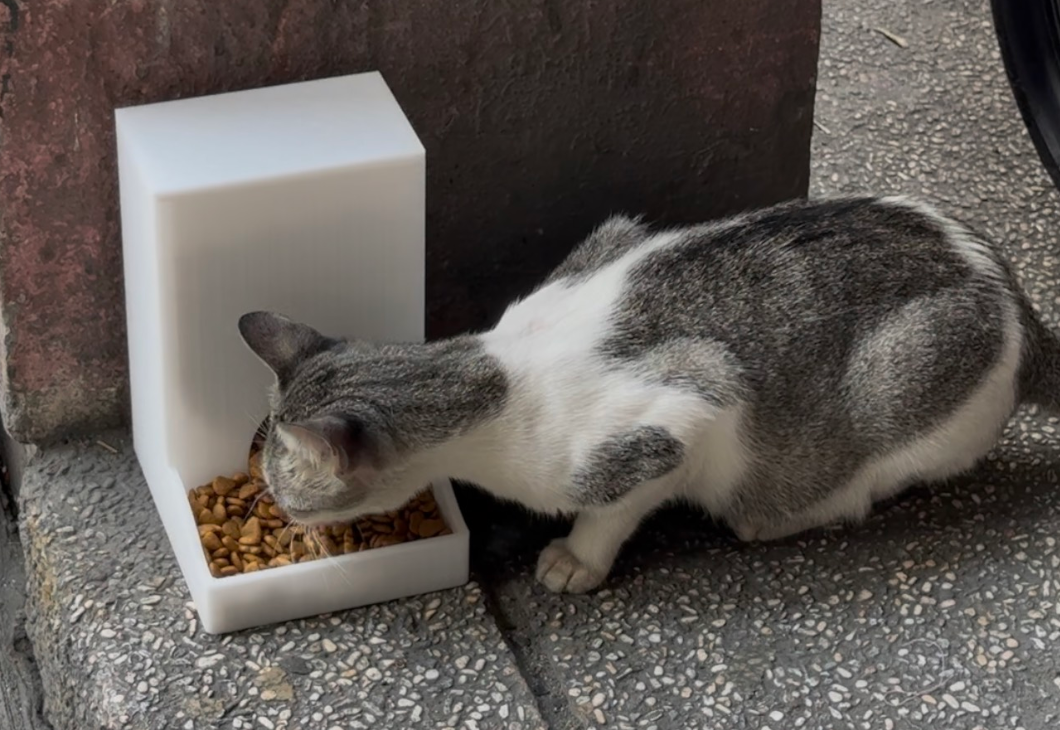Manila is home to many stray cats and dogs, often struggling to find food. In this project, we set out to design a cat food dispenser for a stray cat we named Felicity. Our goal was to create a simple yet functional solution to help provide food for her and other strays.
Step 1: Sketching the Design
Before starting the build, we sketched out the design to visualize the structure and functionality of the dispenser. A key feature we included was a lid to make food storage easier and to help keep the pellets fresh and crunchy.
Step 2: 3D Modeling in Fusion 360
Once the concept was clear, we used Fusion 360 to create a precise 3D model of the cat food dispenser. This step ensured the design was practical and easy to print.
Step 3: 3D Printing with Bambu Lab A1 Mini
After finalizing the model, we printed the dispenser using the Bambu Lab A1 Mini. The process was smooth, and the final product turned out exactly as planned.
Step 4: Feeding Felicity
With the dispenser ready, we filled it with cat food and gave it to Felicity. She was clearly hungry and eagerly ate from the dispenser—just as we had hoped!
Conclusion
This DIY cat food dispenser project is a simple yet effective way to help stray cats. Whether you're an animal lover or a 3D printing enthusiast, this guide can inspire you to create something meaningful.
Stay tuned for more 3D-printed pet care solutions from Bucco!

